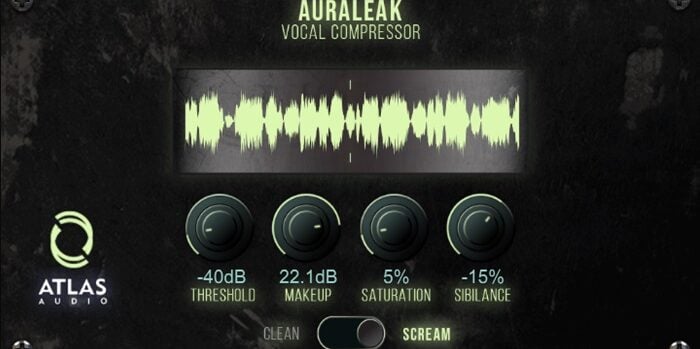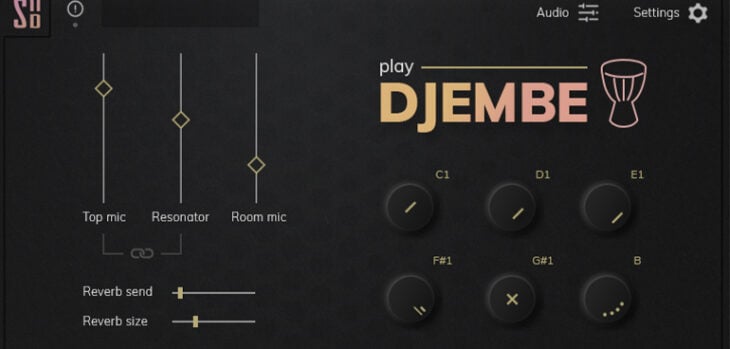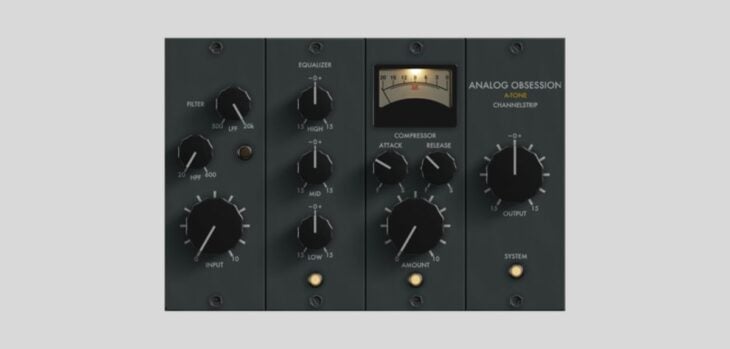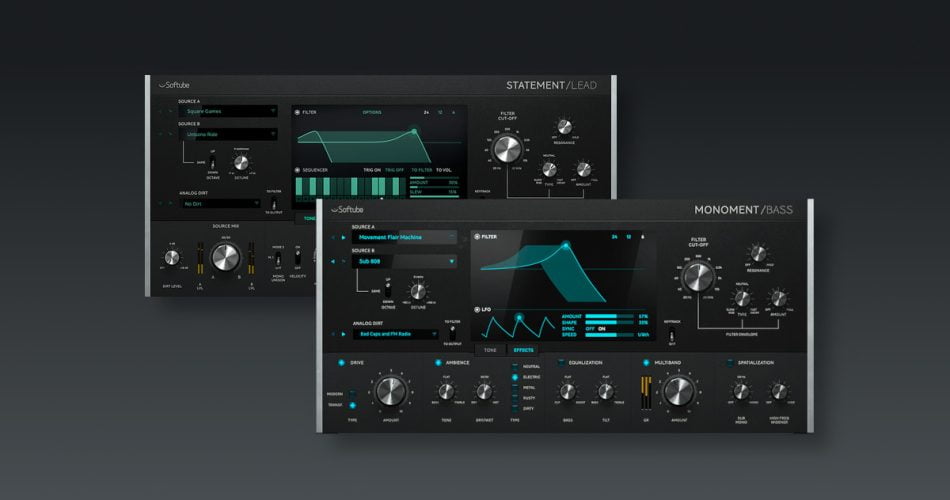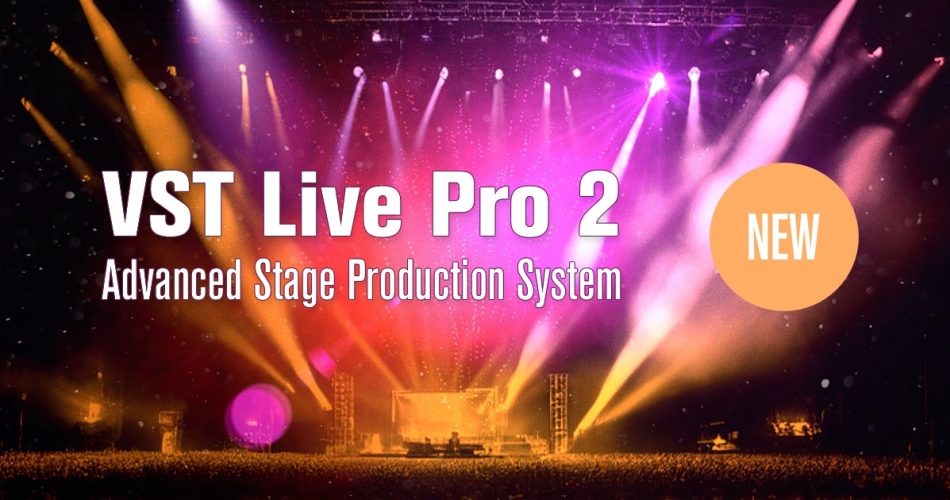Top 10 Tips for Live Sound Engineers
Veteran engineer Brian Pomp is an expert mixer, in both studio and live performance settings. He has mixed for some of the biggest acts in the world, having served as the front-of-house and/or monitor engineer for artists including Grimes, Macklemore, Ke$ha, DNCE, Macy Gray, Iggy Azalea, and TLC. His professional experience runs the gamut of high-energy, high-polish […]
The post Top 10 Tips for Live Sound Engineers appeared first on Point Blank’s Online Magazine.
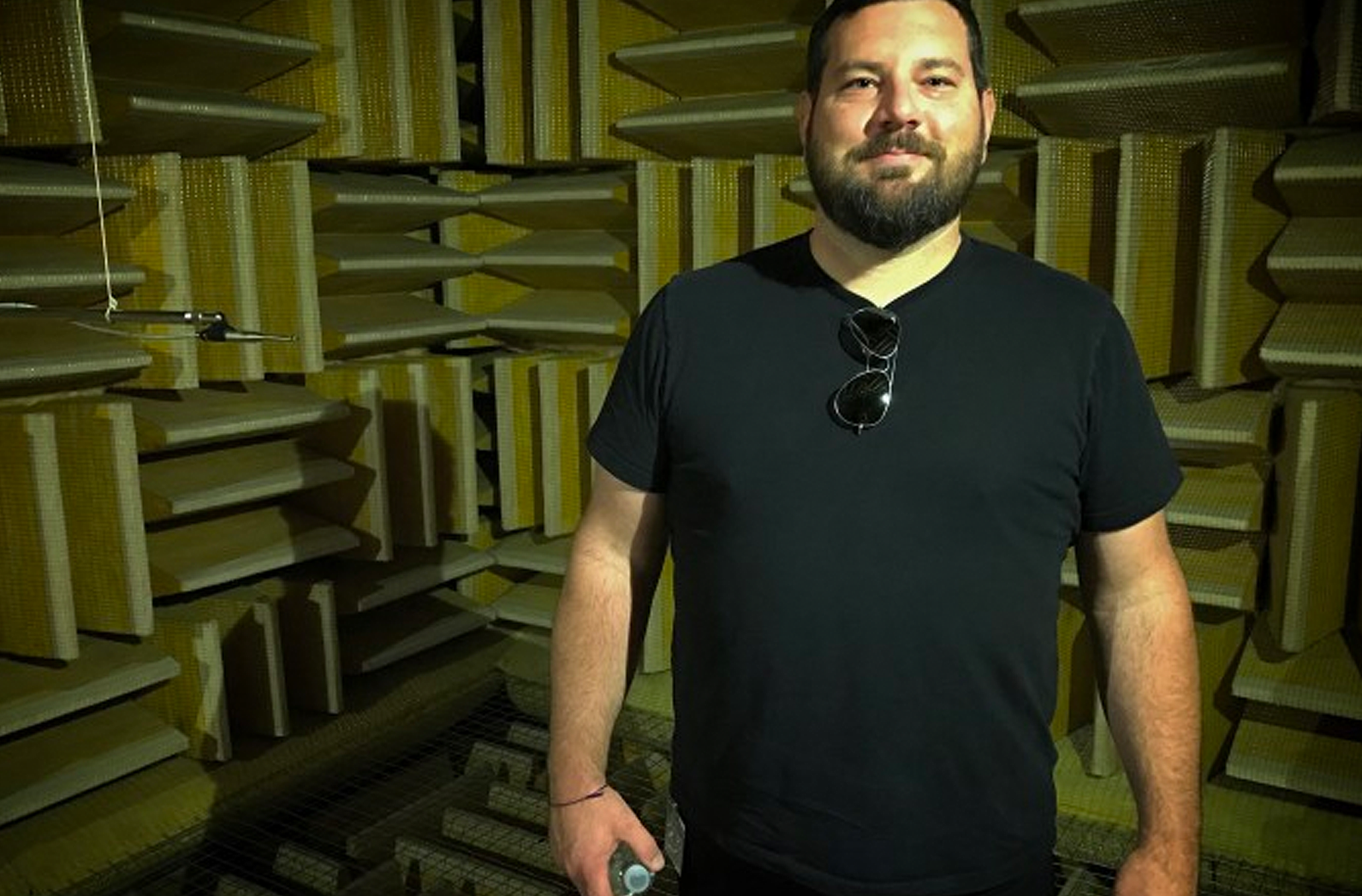
https://plus.pointblankmusicschool.com
Veteran engineer Brian Pomp is an expert mixer, in both studio and live performance settings. He has mixed for some of the biggest acts in the world, having served as the front-of-house and/or monitor engineer for artists including Grimes, Macklemore, Ke$ha, DNCE, Macy Gray, Iggy Azalea, and TLC. His professional experience runs the gamut of high-energy, high-polish acts that bring stunning production value and pure excitement to their live shows. Point Blank caught up with him asked him for his best advice for those interested in starting a career in live sound engineering. Follow on below to hear what he had to say.
If you’re interested in learning the ins and outs of music with Point Blank, we’re currently offering 25% off our selected online and LA courses until 31st December. So, be sure to sign up before this offer ends using the codes ONLINE25 and LA25.
TIP #1
Listen to the room and the lead vocal, and find the appropriate overall EQ and volume for the space. Listen carefully to the environment you will be mixing in and understand the ambience created naturally by its shape and construction. Pay attention to any nodes and frequencies that stand out and might prove to be problematic for keeping your lead vocal at the level you want it to be. The lead vocal is the most important channel in your mix — make absolutely sure it isn’t going to take off and start ringing uncontrollably during the show. The person holding that mic is signing your paychecks! Follow the standard room equalization protocols using a frequency analyzer like Smaart, and level the room to your liking. Then listen to songs you are very familiar with to make sure they sound like they’re supposed to through the system. Also, find the volume that is most appropriate for that particular space. Never try to overpower the natural ambience of a room — especially the Aragon Ballroom in Chicago. You will lose! Many a great engineer have left that building in tears, questioning their entire existence. I did a show in April 2019 in Lviv, Ukraine at an old Olympic-style indoor bicycle track made of lots of glass and concrete, I’m confident the employees there are still hearing the remnants of the show I mixed!
TIP #2
Get your microphone and DI selection down. Choose the microphone or DI that best suits the source you’re trying to capture and amplify. I often buy my own microphones for certain applications if they are obscure or you know a lot of sound companies wouldn’t typically have them in their inventory. I always carry a Shure SM7B, Beyerdynamic M201, Sennheiser MD421’s, and sometimes a couple of Royers, because I know I will always have a use for them and that regional sound companies in random parts of the world probably won’t have them. Lately, I have been carrying a pair of Sennheiser shotgun mics too, because the monitor engineer usually needs them for in-ears, in order to bleed to room sound back into the in-ear mixes between songs so the performer can get the feel of the audience; I also use them for multitrack recordings so I can also add audience into a post mix as needed.
TIP #3
Understand the gain structure across the entire system. Meters are so helpful for keeping an eye on your levels. I use them as added confirmation of what I’m hearing, and then I rarely look again unless I hear something out of sorts. But your meters are there to let you know what your signal is doing at that particular point in the system, whether it be the channel meters, bus meters, or amplifier meters. The most important thing to know is that from the source to the microphone, to the preamp, to the channel strip through any EQ and dynamics processing, through your bus routing and matrixing, and finally to the amps and speakers, ensure that you are not exceeding what each of those stages is capable of handling. If you’re overloading them, you will just end up digging yourself into a hole the entire show that you will have a hard time getting out of. Trying to make up for it in other places lead you further down the rabbit hole into a bad place. Just turn it down! You don’t want to see red lights.
TIP #4
Mixing monitors is a crucial part of the show. You’re right next to the stage, and the band and artist are looking to you to make it right for them so that they can comfortably execute their performance. As a monitor mixer, you may often think that what you are being asked to provide for a particular performer is absolutely insane, but remember that monitor mixing is essentially triage (defined as: the process of sorting victims in a battle or a disaster live performance to determine their medical musical priority in order to increase the number of survivors). Each player wants to hear what they need to survive the gig. Sometimes you’ll have the opportunity to create a beautiful mix with perhaps a little boost to the source of that particular player, but that’s rare — they’ll always figure out a way to destroy your work. When I mix monitors, I oftentimes create an extra mix just for myself to listen to for part of the show if the band and artist aren’t fussy, just to keep sane. But more often than not, I am parked on the artist’s mix the whole show. You never want to spend too much time listening to the drummer’s mix for any other reason than to check on what they are asking for — nobody should be subjected to that amount of click track/metronome for an entire show!
TIP #5
Know your gear, including your compressors and EQs. Audio gear is in a constant state of development, but everything you need to make a show sound good is absolutely available to you. It’s all built into the current digital consoles at nearly every budget level; you just have to know what each aspect of your gear does, and why. Personally, I like to use a lot of compression to get the sound I’m looking for out of a particular source, all the way up to my main bus. Understanding compression is a science in and of itself — learn how the threshold affects the level from the knee to the attack and release of the signal, as well as the desired ratio. These may seem like esoteric ideas, but they all have a huge impact on what the compressor does to the signal. Understanding the different types of compressors and how they behave is also very important; learn why each different type is chosen for certain applications and not used for others. VCA, FET, Optical, MU (tube), Diode Bridge, etc. are all compressor types which ultimately achieve gain reduction, but they each do it differently and oftentimes impart a specific tone to the sound signal. Read about how those compressors work, but perhaps more so, pay attention to what other engineers like to use on things. Equalization was created as a problem solver, and continues to be used in that way, but in a lot of cases now gets used creatively to add character to a source. There are also many types of EQs which, like compressors, each do the same thing but in wildly different ways, accomplishing varied results. Parametric, graphic, shelving, proportional (API), high-pass and low-pass filtering — these are all different filter types used in certain EQs to boost and cut ranges of the audible spectrum. There are even different categories of EQs such as surgical and euphonic equalizers that employ those types of filters at varying degrees. It’s very important to understand where and when you would want to use these options.
TIP #6
In addition to knowing your gear, stay as current as possible with new gear. I remember a time when everyone in the live mixing world was transitioning from analog mixing consoles to digital ones. Many engineers were reluctant or incapable of adapting to the changing technology, and many good sound engineers have left the industry because they just couldn’t keep up with technological advancements like that. Initially, digital consoles didn’t sound that great, but a lot of engineers liked the flexibility of having everything they needed in a compact package, rather than lugging around racks and racks of gear and a heavy console. Production managers like digital consoles even more, because they take up much less truck space. Recallable scenes became very important for mixers over time as the musical content demanded it; the flexibility of changing any parameter from song to song (or on an even more granular level, being able to change up your mix approach within a single song as it progresses from verse to chorus) became essential. In the 20 years or so since digital consoles have taken over, they have drastically improved sonically. They now have even more powerful built-in features, including the use of onboard plug-ins. Keeping up with technology is one of the greatest investments you can make in your career.
TIP #7
It’s just my opinion, and I know it will ruffle some feathers, but… live mixing and studio mixing aren’t as different from each other as they once were. It wasn’t always that way, unless you were mixing in arenas and stadiums and carrying a lot of studio pieces with you. But as a live mixer nowadays, you are expected to deliver a studio-quality mix for the artist’s live performance. From the hardware, to the consoles (Digico SD and Quantum, Avid S6L, SSL Live, etc.), and the plugins (UAD, Waves, etc.), we are using the same tools now in the live setting and in the studio. The biggest difference is that live mixing deals more with the environment than studio mixing. But with the variety of system control options out there now such as Lab Gruppen Lake, Meyer Galileo, L-Acoustics P1, Direct Out’s Prodigy.MP, and state-of-the-art line array speaker systems like the L-Acoustics K1 & K2, the d&b audiotechnik GSL and J Series, Clair Cohesion, Meyer Lion, JBL VTX, and others, you can create a live system that sounds every bit as good as the best set of studio monitors. So in the right environment, you are essentially mixing in exactly the same way as a studio engineer would do it. Except you only get one shot to get it right!
TIP #8
Know your politics. I’m not talking about elections! I’m referring to understanding how to build your network while navigating the politics within the music industry. It’s so important to be pleasant and easy to work with. Know when to stay in your lane, e.g. you’re a sound mixer; don’t pipe up with opinions about lighting or scenic elements. Reach out to managers of smaller upcoming artists so they know who you are and what you have done. They’re probably looking for you as much as you’re looking for them. They can’t afford an A-level mixer for their artist at this stage. Unless you work your way up to becoming a mixer by graduating within a sound company, you will likely get your work from managers of smaller artists. Keep in mind that you will never meet or talk to a manager on the level of Irving Azoff, and even if you do, he will never remember who you are; he never deals with live sound mixers, so get that out of your head! Production managers are the other route; they typically have the relationships with bigger managers for larger artists and bands. Developing relationships with production managers can put you in a good place to be the preferred sound engineer for their tours. Follow them on social media. Pay attention to what they are doing and who they are working with. Most importantly, don’t be annoying.
TIP #9
Since the gap between studio and live mixing has closed considerably, it’s crucial to be just as well-versed in studio mixing as you are in live mixing. By that I mean: know how to operate all the various DAWs (digital audio workstations) such as Ableton Live, Logic Pro, and Pro Tools. Live sound engineers never used to have to know anything about recording! Shows used to be about setting up the stage and PA, mixing the show, loading out, and getting on the bus to the next gig. Nowadays everyone wants all of their shows multi-tracked, not just for archival purposes but oftentimes for post mixing of live recordings, which can equate to more revenue streams for the artist. It’s important to know as much as you can so you can about that in order to create more revenue streams for yourself. Be able to mix that content you just recorded, so that you don’t have to FedEx the hard drive to a studio mixer who will have no prior knowledge of the musical material you’ve just captured. Don’t you want to make that money instead?
TIP #10
When traveling, sign up for every single program available, and make yourself as comfortable as possible. If you can turn your passion for live sound mixing into a sustainable career, you’ll spend a lot of time traveling to amazing places all over the world. When you’re always on the go, It can be a challenge to get comfortable, so try to create and maintain a comfortable level of normality on the road. Every airline has frequent flyer programs with lots of benefits like seat upgrades and earning miles towards for free flights for your own vacations, so sign up for them all. The same thing goes for hotels; even if the tour manager steals the points when they book the hotel, you can still earn points by spending money on things like room service. Connect as many programs as possible. For instance, connecting your Delta and Lyft accounts earns you Delta miles when you take Lyft rides. Get yourself a credit card that has a lot of benefits. Personally, I use an American Express Platinum card, but there are many card options out there with great benefits. Some of them even get you airline lounge access, which makes flying a little easier. Sign up for Global Entry, TSA Pre-Check, or whatever travel programs your particular country offers. Again, this alleviates some of the burdens of constant travel. Pack light. You’re going to a lot of places over short periods of time. Don’t bring unnecessary items that will only weigh you down. Don’t be the one person in the crew who winds up with excessive baggage or overweight fees — let the band members get yelled at for that! Also, keeping a detailed log of all of your favorite places to go on tour is another great way to stay sane out there. Your favorite museums, book stores, coffee shops, restaurants, and bars. Try different types of food and other things you’d never consider at home. And perhaps most importantly, make friends with the locals!
Thinking of joining us at PBLA? We offer a plethora of courses in music production and DJing including our newest and most extensive Music Production & Sound Design Master Diploma programme as well as our DJ/Producer Certificate, Music Production & Sound Design Diploma, Mixing & Mastering Award, Music Production & Composition Award and more. For additional information, contact a course advisor or, if you’re in the USA, give us a call on 323 282 7660. If you’re calling internationally, use the number +44 20 7729 4884.
Register to Access Free Courses, Plugins, Projects, Samples & More
When you register with Point Blank, you access an array of free sounds, plugins, online course samples, access to our social network Plugged In and much more! Simply register below and visit our Free Stuff page to get your hands on a range of exclusive music-making tools and tutorials provided by the team. Fill your boots!
The post Top 10 Tips for Live Sound Engineers appeared first on Point Blank’s Online Magazine.
This is a syndicated post. To read more, click the source link above.

